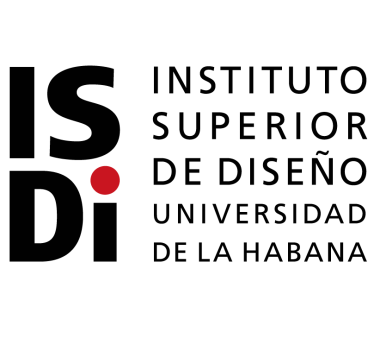Vol. 6 Núm. 11 (2019): No. 11 - julio - diciembre / 2019
Las referencias bibliográficas
Juan Emilio Martínez
Las referencias bibliográficas constituyen aquella parte del texto que ha sido escrito por otros autores, que nos sirven para argumentar-apoyar nuestro artículo o trabajo y deben ser posibles de consultar. Utilizar correctamente este recurso evitará problemas de plagio o similitud de publicaciones.
Algunos autores todavía hoy confunden y no son capaces de establecer las diferencias entre bibliografía y referencias bibliográficas. La primera, es el listado completo de los materiales que se han consultado para escribir un trabajo.
A3manos se rige por las Normas de la American Psychological Association (APA) y estas establecen que en las referencias solo se incluyen las fuentes que se utilizaron de apoyo para el trabajo, aquellas que sirvieron para sustentar argumentos a lo largo del texto, ya sea a través de citas textuales o afirmaciones generalizadas.
Cada día es más complejo evaluar la calidad de las referencias bibliográficas porque la cantidad y diversidad de las fuentes de información aumentan constantemente.
Si se tiene en cuenta que las referencias bibliográ?cas son un requisito indispensable en todo artículo cientí?co, es oportuno tener en cuenta los elementos positivos que reportan: los lectores interesados tienen la posibilidad de recuperar la información de su interés al proporcionar información válida y útil; el artículo contribuirá a incrementar la calidad de la revista y su uso; un artículo no tan atractivo, puede ser bien estimado a causa de sus referencias; reconocer que el investigador se ha documentado correctamente, a partir de éstas; sirven para reconocer las ideas y los hallazgos de otros investigadores, refrendar a?rmaciones y argumentos y para respaldar la información suministrada.
Las ventajas antes señaladas solo se cumplirán si los autores comprenden que es su obligación presentar listas de referencias libres de errores o defectos, en conformidad con el estilo que adopta la revista en la cual pretenden publicar. El apego de las referencias al modelo exigido y su actualidad, demuestra el rigor y seriedad en el trabajo.
Tabla de Contenidos
Fidel en su relación con el Instituto Superior de Diseño (ISDi)
Juan E. Martínez
Resumen
Fidel tuvo una relación muy cercana con el diseño cubano y en especial con el ISDi y sus estudiantes. Siempre apoyó e indicó la búsqueda de soluciones para propiciar el desarrollo del ISDi.
Mujeres de la Bauhaus y su legado al discurso del Movimiento Moderno
Danay Hernández
Carolina E. Valiente
Resumen
El objetivo del trabajo es mostrar el hacer profesional de las mujeres representantes de la Bauhaus, marcadas por una discriminación de género, pero merecedoras de los logros que se le atribuyen a la escuela.
Se conoce muy poco de la historia de estas prolíficas mujeres porque muchas de ellas tuvieron que enfrentar la invisibilidad y la falta de reconocimiento de su trabajo. Debido a estereotipos de la época se vieron obligadas a desarrollarse mayoritariamente en la esfera textil, sin embargo, hubo exponentes que trascendieron las barreras de lo que se consideraba ´´femenino´´.
Al igual que sus condiscípulos, fueron generadoras de ese nuevo discurso desde sus proyectos. Y aunque quedaron en un segundo plano como partes de una pareja o sus piezas pasaron a la historia como productos realizados solo por sus ellos, consiguieron salir adelante y labrar su camino sin dejarse disuadir por las limitaciones que les fueron impuestas. La siguiente es una muestra de 10 mujeres cuyo trabajo en el arte y el diseño constituyeron un legado para el Movimiento Moderno.
Desde la academia. 2019 - Tesis de doctorado ISDi. Tesis de Maestría ISDi
Juan E. Martínez
Fernando A. Peón
Resumen
2019 - TESIS DE DOCTORADO ISDi
Peña Martínez, Sergio Luis. Modelo para caracterizar la profesión de diseño. En el contexto social y productivo de Cuba
Resumen
El documento de la Tesis se estructuró en:
Introducción, que describe la situación problemática, expone y fundamenta el problema científico a resolver.
Capítulo 1. Que aborda los referentes teóricos y metodológicos de la investigación, se profundiza en el objeto de estudio y determina el estado actual del mismo.
Capítulo 2. Donde se desarrolla el modelo y se expone el material y método de las tareas investigativas realizadas para la concepción del modelo, sus componentes, interrelaciones y procedimientos, así como la validación del modelo como forma de comprobación de la hipótesis.
Conclusiones, recomendaciones, bibliografía consultada y anexos.
Los aportes de la investigación se refieren a la novedad científica al caracterizar la profesión de Diseño en el contexto social y productivo de Cuba, que integra el objeto de la profesión con las competencias profesionales.
La construcción de una concepción teórica integradora del Diseño, que define e interrelaciona los componentes del objeto de la profesión. El valor metodológico dado por la lógica del modelo relacional para caracterizar la profesión de Diseño en el contexto social y productivo de Cuba. El modelo es bidireccional y permite transitar desde los problemas profesionales a los perfiles de diseñadores y viceversa
Socialmente contribuye a la cultura general de Diseño, a la construcción de políticas y a la inserción en la realidad, como vía para la elevación de la calidad de vida y desarrollo sociocultural del país.
El modelo y su marco teórico constituyen la base conceptual de los planes de estudios de las carreras de Diseño en lo relativo a los modelos del profesional, perfiles, especializaciones y sistemas de objetivos por carreras y años, aportando también a la superación y capacitación a todos los niveles de posgrado y capacitación laboral.
Y como aporte económico se considera que esta herramienta asiste a los procesos de inserción e integración del Diseño en la realidad económica y social, permite una mejor organización del ejercicio de la profesión y la gestión de los recursos humanos en el Registro de diseñadores, los Calificadores.
2019 - TESIS DE MAESTRÍA ISDi
Urueña Téllez, William Fredys. Lineamientos para la formulación de políticas públicas de diseño en el Ecuador.
Resumen
Tomando como problema público a la falta de inserción del diseño como factor de desarrollo productivo, económico, social y cultural en Ecuador y su responsabilidad social, la formulación de políticas en este sentido, constituye una de las principales estrategias de gestión del diseño para: preservación de identidad en el patrimonio material, sostenibilidad ambiental, desarrollo productivo, competitividad, mejora de los procesos de comercialización e imagen, innovación en empresas, productos, procesos y servicios, entre otros. Por otra parte, la mala planificación en la formulación de este tipo de proyectos conlleva a que estos no logren responder a los objetivos, metas y usuarios propuestos. En consecuencia, el objetivo de esta investigación es mostrar el valor que tiene el uso del Enfoque de Marco Lógico (EML) como herramienta para la planificación, evaluación y gestión de proyectos de desarrollo social, específicamente, de políticas para el Diseño. Para la generación de los problemas, causas y efectos, se trabajó con datos de la Cámara de Diseño del Ecuador recopilados desde el 2011, específicamente las relatorías de las mesas de trabajo realizadas en las cuatro versiones del Encuentro Internacional de Cromía, con participación del Estado, la academia, empresarios, usuarios y los diseñadores representados en diferentes asociatividades a nivel nacional. Los resultados y conclusiones de aplicar el EML se muestran en el enunciado de cuatro políticas públicas dirigidas a: fomento y promoción del Diseño, mejora de la productividad, innovación y competitividad, formación en diseños; observación, investigación y cultura de diseño.






















